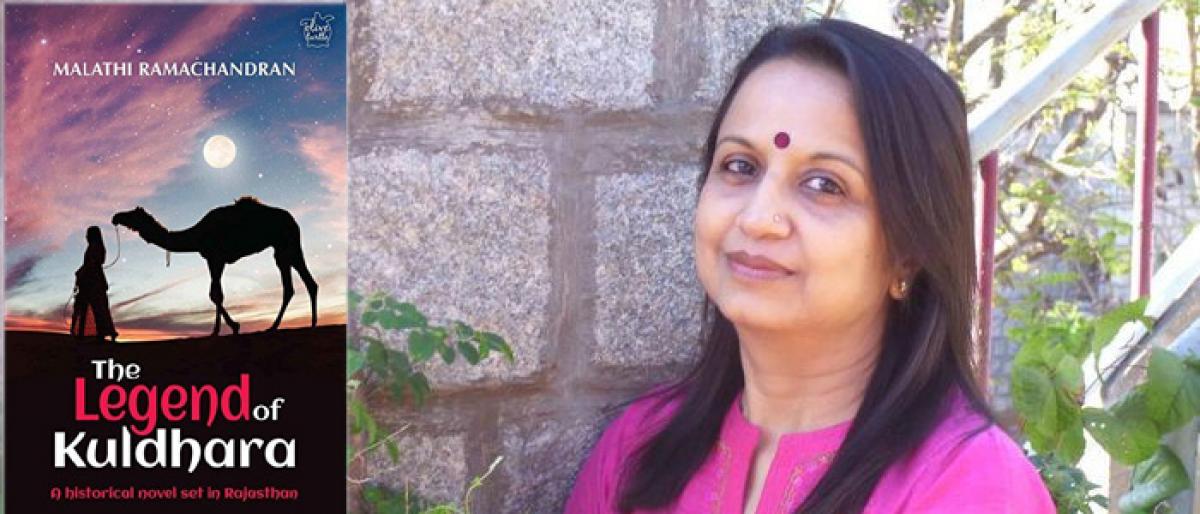Live
- DEO suspends teacher accused of sexual assault
- PM ‘cursing’ Congress out of despair: Maharashtra Cong Chief
- Applications are invited for Junior Colleges Scheme District Scheduled Castes Development Officer Ramlal
- A nomination was filed on the second day for the Nagar Kurnool parliamentary seat
- SP Gaikwad inspected the Telangana Amarnath Saleswaram Jatara yatra arrangements
- Rahul Gandhi's decision to contest from Wayanad shows 'lack of confidence': BJP President Nadda
- IPL 2024: Delhi bowlers will go after all of SRH’s top-order batters, says head coach Ricky Ponting
- At Amroha rally, PM Modi sends out ‘meaningful’ message for Muslims and Hindus
- Tripura records highest 79.83 pc voter turnout in Northeast
- The government has to clear the confusion
Just In

The story of the legend and curse of Kuldhara has always been a mystery as everyone is familiar with the incomplete ending that disappears into a void. In the book, \"The Legend of Kuldhara\", author Malathi Ramachandran picks up the loose threads left behind by history and weaves it into a beautiful and intricate novel.
The story of the legend and curse of Kuldhara has always been a mystery as everyone is familiar with the incomplete ending that disappears into a void. In the book, "The Legend of Kuldhara", author Malathi Ramachandran picks up the loose threads left behind by history and weaves it into a beautiful and intricate novel.
The tale that history has told us is of a village in Rajasthan named Kuldhara which was deserted overnight by the prosperous Paliwal Brahmins after the cunning Diwan of the Maharawal of Jaisalmer, Salim Singh, cast his licentious eyes on the elder daughter of the Kuldhara village chief. Following this, the village people disappeared into thin air, leaving no trace of themselves. The mysterious part remains that they were never found.
The author goes on to add to the story what might or could have happened to these people, how their lives were altered or even shattered for many as they had to leave their homes in a single night and stray into the unknown, harsh deserts.
In a conversation through email, Malathi Ramachandran revealed: "Weaving a story out of meager information sounds very difficult and challenging. But it is actually a boon for a fiction writer because it is then possible to create a fresh world complete with its own characters and events and stories."
The strong pillars of this book are the two female characters, who despite having obstacles hurled at them, refuse to give in to the circumstances and stand firm as rocks. The author portrays the characters of Pari (elder daughter of the Kuldhara village chief) and Parvati (Salim Singh's wife) who though live miles apart are connected by an evil string, the Diwan. Though they have their low points, they keep their strength to accept and fight the challenges.
Depicting such female characters at a time, more than hundreds of years ago, when society had a strong patriarchal stench, isn't an easy task. However, what drew her attention was that these characters instead of looking out of place completely fitted the plot of the story.
"I have woven the plot keeping in mind that this was a hundred years ago, in heavily patriarchal times, when women were treated as chattels and pawns. In that sense, whatever happens to Pari and Parvati is natural, but how they decide to react is my own take on how a woman's strength comes out in adversity," Ramachandran said.
"Based on the historical facts, I went about creating a detailed plot, storyline, and characters. I had decided to centre the story around the one woman who was not only the (unwitting) cause of the exodus but also its victim because the rest of the clan would always hold her responsible for their troubles.
So I created the character of Pari. Then I realised that if Salim was a womaniser he would surely have an unhappy wife or two in his life. So I created the character of Parvati." "My aim was to make the two women not just victims of their destiny, but strong enough to take their lives into their own hands at some point. As for the other characters, they were created to fit into the plot," she added.
By: Ananya Das

© 2024 Hyderabad Media House Limited/The Hans India. All rights reserved. Powered by hocalwire.com







